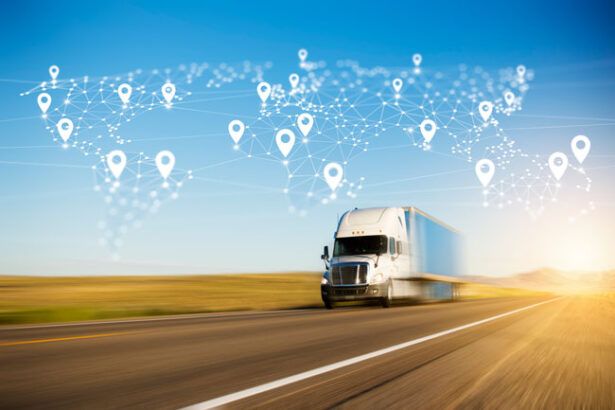
Fleet cards are commonly used by businesses that rely on a fleet of vehicles. After all, a fleet fuel card provides a range of benefits, from cost savings to improved efficiency to enhanced fleet management. However, these advantages are rarely leveraged to their full potential. When fleet managers and company owners maximize a fleet card’s offerings, the benefits can impact every aspect of the business.
Benefits of Fleet Cards
When used appropriately, your fleet card can help your accounting department and your drivers be more efficient.
Before we can get more out of our fleet cards, we need to know what benefits they provide. These alternative payment methods to cash or credit cards are primarily used for fuel purchases and fleet vehicle maintenance. Here are a few of the standard benefits offered by most fleet fuel cards:
Cost Savings
Fleet cards are most commonly known for their potential savings at the pump. Most fleet fuel card providers offer fuel rebates, and some, like Shell Fleet Cards, offer additional savings or discounts on parts and services for vehicle maintenance.
Expense Tracking
When your drivers use a fleet card, purchase details are captured in real time. The collection of this data means your fuel expense tracking is automatically done for you. Real-time data includes:
- Date and time
- Location
- Fuel type and grade
- Purchase volume
- Purchase amount
- Mileage
Purchase Controls
Most fleet cards, including Shell’s offerings, are equipped with purchase controls. This feature allows fleet managers to set limits for transactions including:
- Purchase amount
- Purchase volume
- Number of transactions
- Hours of the day or days of the week a card can be used
Convenience
With streamlined expense tracking, paperwork is reduced, and robust reporting and analytics provide accurate and up-to-date information for budgeting and forecasting.
These benefits can help fleet managers get more from their fleets. Yet, there is so much more your fleet card can offer. When you maximize the capabilities of your fleet fuel card, your business can experience the following:
- Additional savings
- Increased efficiencies
- Improved company policy compliance
- Enhanced tracking capabilities
Save More with Fleet Cards
There are several ways to increase your fuel savings with a fleet fuel card.
Leverage Fuel Rebates
Many fleet cards offer fuel rebates, yet it’s not uncommon for drivers to fuel at stations where rebates are unavailable. A fleet will spend less on fuel when managers ensure drivers know where to fill up.
Optimize Fleet Maintenance
Fleet cards often provide discounts on vehicle maintenance services with specific providers. Shell fuel cards, for instance, provide 15% to 20% discounts at participating Jiffy Lube locations. Using such discounts can yield significant savings and help increase cash flow.
Fleet cards are also a great way to track maintenance and ensure vehicles are serviced when necessary.
Monitor and Manage Spending
Effective expense management is key to maximizing fleet card benefits. Here’s how to do it:
- Use the card’s control features to set spending limits for fuel and maintenance.
- Regularly review transaction reports to ensure compliance with company policies.
- Analyze spending patterns to identify areas where costs can be reduced.
Enhance Efficiency with Fleet Cards
When used appropriately, your fleet card can help your accounting department and your drivers be more efficient.
Streamline Administrative Tasks
Fleet cards can significantly reduce administrative burdens by streamlining billing and expense tracking. Here are a couple of steps you can take to increase the efficiency of your accounting department:
- Use your fleet card for all fuel and maintenance purchases to consolidate billing and simplify accounting.
- Take advantage of the card’s automated reporting features to reduce manual data entry and minimize errors.
- Integrate your fleet card data with your accounting software to further streamline expense management.
Improve Driver Behavior
Driver behavior has a direct impact on fuel consumption and vehicle maintenance costs. More fuel is used, and more vehicle wear and tear occurs when an employee drives aggressively. With a fuel card, fleet managers can monitor and improve driver behavior through:
- Telematics integration: Integrate fleet cards with telematics systems to track driver behavior such as speeding, idling and harsh braking.
- Driver training: Use data from the fleet card and telematics to identify areas for driver improvement and provide targeted training.
- Incentive programs: Implement incentive programs to reward drivers for fuel-efficient and safe driving behaviors.
Ensure Driver Compliance with Fleet Cards
Policy compliance can be an issue for many fleets. Two common problems with compliance are unclear policies and lack of enforcement. A fleet card can be helpful in both areas.
Set Clear Policies
Establish a clear fuel spending policy for your fleet. Make sure your policy includes the following:
- Authorized purchases: Define what purchases are allowed with a fleet card (e.g., fuel, maintenance, emergency repairs).
- Spending limits: Identify limits for different types of expenses.
- Reporting requirements: Specify how and when drivers should report transactions.
Using a fleet card, you can set purchase limits that align with your policy and automate reporting with real-time data.
Regular Audits
To ensure compliance with company policies, fleet managers should conduct regular audits. This practice should include:
- Regularly reviewing transaction reports for any unusual or unauthorized purchases.
- Ensuring drivers adhere to spending limits and authorized purchase guidelines.
- Reconciling expenses with vehicle usage and maintenance records to identify any inconsistencies.
All of these components of auditing fuel expenses can be simplified by using a fleet card’s reporting capabilities.
Leverage Technology

Most fleet cards include mobile apps and can be integrated with telematics. These technologies can help improve a company’s ability to track expenses, drivers and vehicles.
Utilize Mobile Apps
Using a fleet card’s mobile app can help:
- drivers find nearby fuel stations within a fleet card network,
- monitor expenses in real-time with notifications for suspicious transactions,
- manage fleet card accounts, view statements and pay bills directly from the app.
Integrate Telematics
Combining your fleet card with a telematics system increases insights and enhances control. When using a fuel card program integrated with telematics, a fleet manager has:
- Access to all fleet-related data in one place for better decision-making.
- Fuel and maintenance data combined with vehicle performance metrics for more detailed reporting and analysis.
- The capability to map more fuel-efficient routes.
Maximizing your fleet card benefits requires a strategic approach that includes choosing the right card, leveraging discounts, tracking fuel usage and managing employees.
Get More from Your Fleet Card
Maximizing your fleet card benefits requires a strategic approach that includes choosing the right card, leveraging discounts, tracking fuel usage and managing employees. By following these best practices, businesses can help reduce costs, improve efficiency and ensure compliance with company policies.